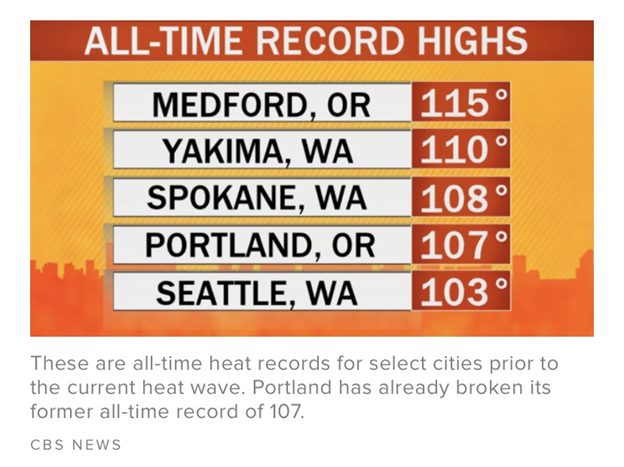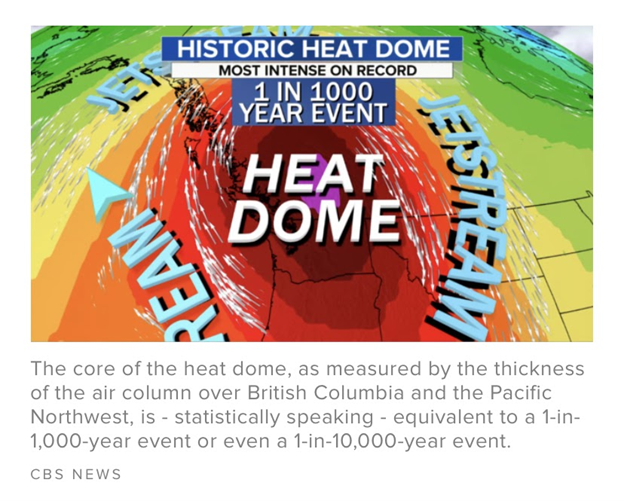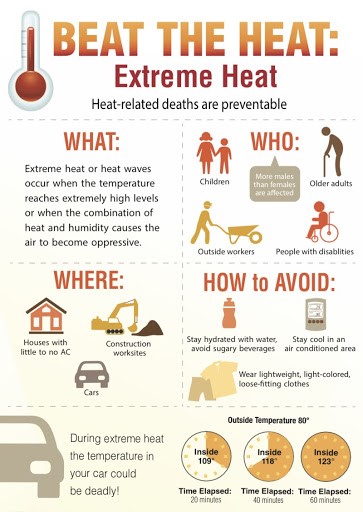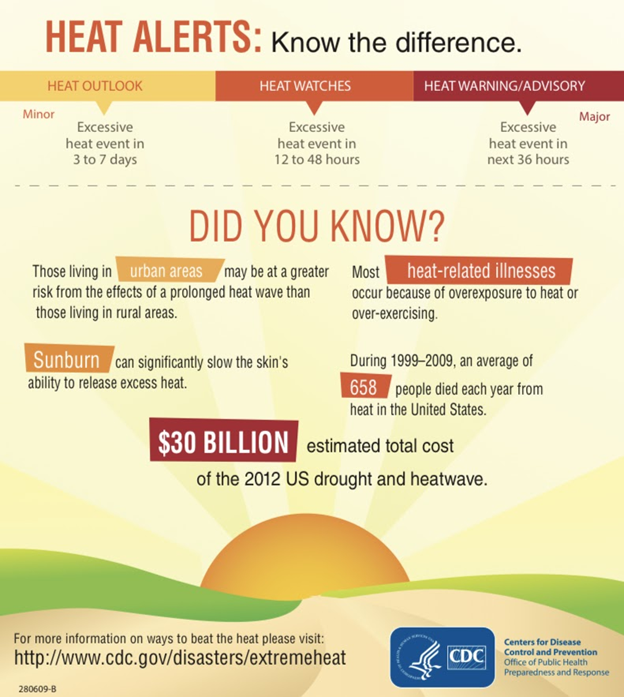Learn about the most extreme heatwave in modern history recorded in June 2021 & how heatwaves create air pollution…
A historic heatwave accounting for at least 600 known deaths due to heat exposure plagued the Pacific Northwest of the United States and Canada last week. It was reported that this extreme heatwave is so rare, you could live 1,000 years to experience a heat dome like this only once, if ever.
“Never in the century-plus history of world weather observation have so many all-time heat records fallen by such a large margin than in the past week's historic heatwave in western North America,” wrote meteorologist Bob Henson and former NOAA hurricane scientist Jeff Masters in Yale Climate Connections.
Our company was founded in 1989 and is headquartered in Grants Pass, Oregon, in the beautiful Pacific Northwest. We have never seen anything like this and were among those that witnessed first-hand the most devastating heatwave in modern history. This event has left many of us concerned, worried about future heatwaves and what we can do to combat them.
Met One Instruments Powered by Acoem has been a leader in the air monitoring industry, testing air quality for the public for over 30 years. Our expertise has prompted us to share how heatwaves affect air pollution, air quality, and our collective health. Extreme heatwaves come with significant public health risks and are the deadliest weather phenomenon in the United States.
Did you know that hurricanes and floods have caused an average of 138 deaths per year since 1991? This single historic heatwave in June 2021 has claimed the lives of reportedly at least 500 people in Western Canada, and another hundred and counting combined between Oregon and Washington State. Thousands fled their un-air-conditioned homes across the PNW for shelter in emergency cooling centers to seek reprieve from the dangerous heat that persisted several days.
What is a Heat Dome?
“A heat dome is effectively what it sounds like—an area of high pressure that parks over a region like a lid on a pot, trapping heat. Research from the National Oceanic and Atmospheric Administration (NOAA) shows they are more likely to form during La Niña years like 2021 when waters are cool in the eastern Pacific and warm in the western Pacific. That temperature difference creates winds that blow dense, tropical, western air eastward. Eventually, that warm air gets trapped in the jet stream—a current of air spinning counterclockwise around the globe—and ends up on the U.S. West Coast.” –National Geographic
During summer, especially during extreme heatwaves, ozone often reaches dangerous levels in cities or nearby rural areas. Why? Ground-level ozone pollution is created more efficiently in sunny, hot weather and the reactions that create harmful ozone in our atmosphere require continual sunlight.
Heatwaves, such as this recent historic event in the Pacific Northwest, often lead to poor air quality. Extreme heat combined with stagnant air during a heatwave increases the amount of ozone pollution and particulate pollution. These conditions also contribute to a perfect storm for severe drought conditions in which forest fires are more common. Fires add a dangerous mix of carbon monoxide and particle pollution to the atmosphere.
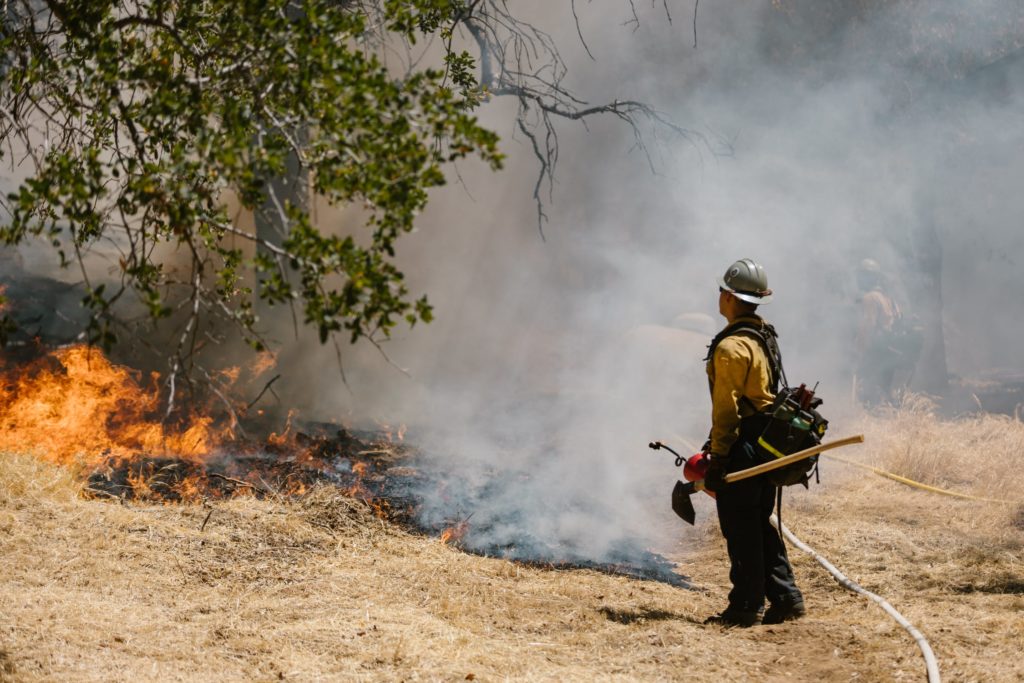
Regarding public health, the more evident risk of a heatwave is heat exhaustion or heat stroke, especially for those who work outside, the homeless, and those living with poor ventilation or without air conditioning. Unfortunately, the risk of exhaustion or stroke is not the only public health risk. Along with extreme heatwaves also comes terrible air quality, which poses additional dangers. While temperatures climbed last week, so did pollution readings.
“Ground-level ozone pollution forms when heat and sunlight trigger a reaction between two other pollutants, nitrogen oxide and volatile organic compounds — which come from cars, industrial facilities, and oil and gas extraction. High temperatures, therefore, make ozone pollution more likely to form and harder to clean up. Drought and heat also increase the risk of wildfire, which can make air quality worse as smoke drives up levels of fine particulate matter — also known as PM2.5, or soot.” Heatwaves can be life-threatening — for more reasons than one
Met One Instruments, Inc. offers rugged and reliable air quality monitors that provide accurate PM readings during extreme heat events and fires. Learn about how the ES-450 particulate profiler or the E-BAM offer portable, rapid-response PM measurements with an optional solar panel power source. These airborne particulate monitors can alert the local population to unhealthy levels of ambient PM and empower appropriate actions for remediation. Used widely by the US Forest Service, these monitors save lives.
During a heatwave, one of the biggest reasons air quality is affected negatively is that the air becomes stagnant, trapping various pollutants like ozone. Both ozone and PM2.5 carry significant health risks.
Ozone can cause acute symptoms and chronic effects such as asthma and an increased risk of type 2 diabetes by causing insulin resistance. PM2.5 exposure can also lead to an increased risk of asthma, heart attack, and strokes. A staggering and alarming statistic globally, long-term exposure to PM2.5 caused one in five deaths in 2018. 350,000 of those deaths occurred here in the United States.
Scientists from the National Centers for Environmental Information (NCEI; formerly the National Climatic Data Center, an arm of NOAA), the Cooperative Institute for Meteorological Satellite Studies–Wisconsin, and the Cooperative Institute for Climate and Satellites–North Carolina summarized the current state of scientific knowledge regarding observed and projected changes in weather and climate extremes.
We encourage you to read their report about the impact on air and water quality in an article entitled “Changes in Weather and Climate Extremes: State of Knowledge Relevant to Air and Water Quality in the U.S.,” published in the Journal of the Air & Waste Management Association.
The Centers for Disease Control and Prevention (CDC) offer excellent resources to help you navigate what to do if caught in a heatwave. Check out these articles to learn more!

📖 CDC – Tips for Preventing Heat-Related Illness
📖 CDC – Extreme Heat Can Impact Our Health In Many Ways
📖 Center for Climate & Energy Solutions – Resilience Strategies for Extreme Heat

